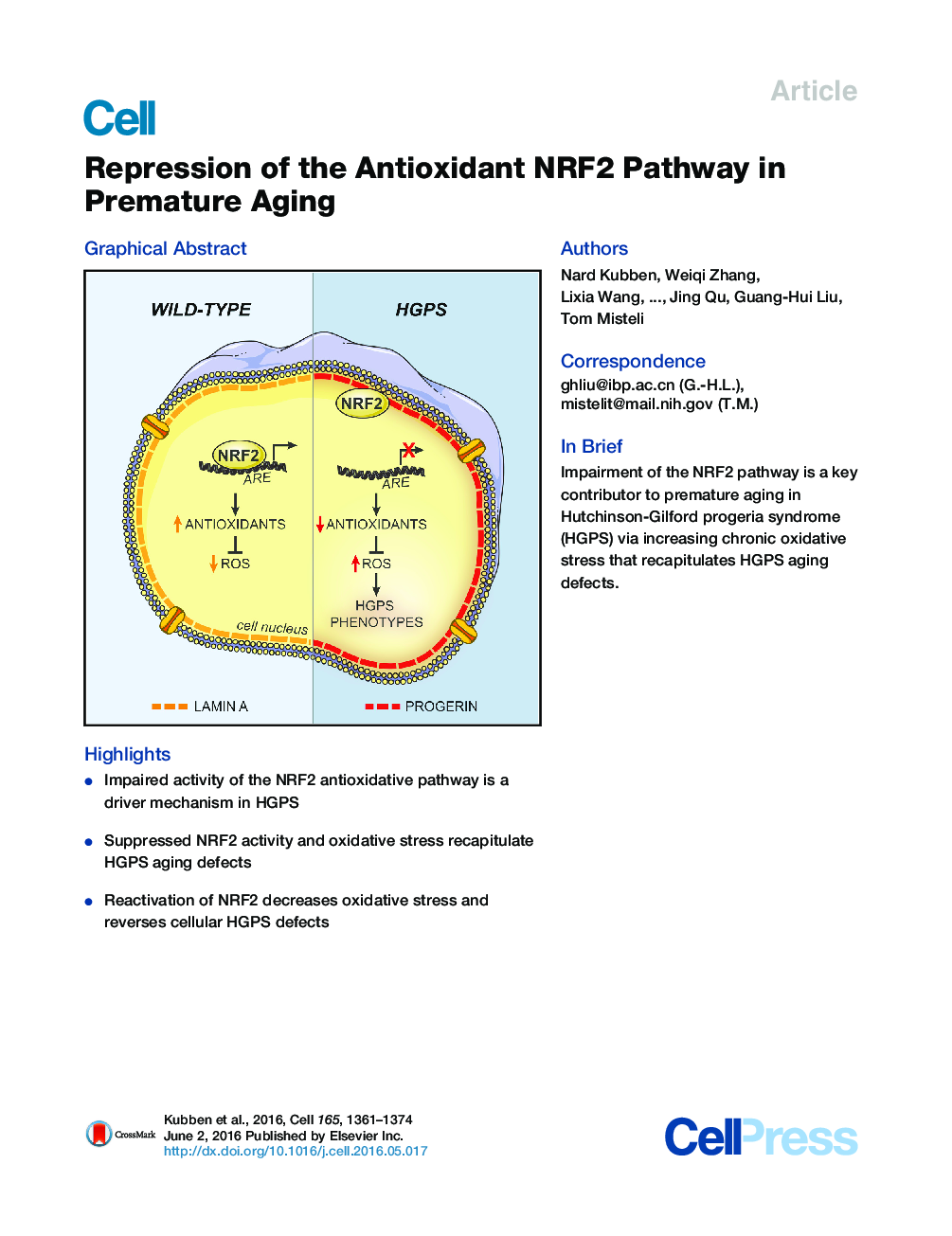| کد مقاله | کد نشریه | سال انتشار | مقاله انگلیسی | نسخه تمام متن |
|---|---|---|---|---|
| 2035028 | 1072125 | 2016 | 14 صفحه PDF | دانلود رایگان |

• Impaired activity of the NRF2 antioxidative pathway is a driver mechanism in HGPS
• Suppressed NRF2 activity and oxidative stress recapitulate HGPS aging defects
• Reactivation of NRF2 decreases oxidative stress and reverses cellular HGPS defects
SummaryHutchinson-Gilford progeria syndrome (HGPS) is a rare, invariably fatal premature aging disorder. The disease is caused by constitutive production of progerin, a mutant form of the nuclear architectural protein lamin A, leading, through unknown mechanisms, to diverse morphological, epigenetic, and genomic damage and to mesenchymal stem cell (MSC) attrition in vivo. Using a high-throughput siRNA screen, we identify the NRF2 antioxidant pathway as a driver mechanism in HGPS. Progerin sequesters NRF2 and thereby causes its subnuclear mislocalization, resulting in impaired NRF2 transcriptional activity and consequently increased chronic oxidative stress. Suppressed NRF2 activity or increased oxidative stress is sufficient to recapitulate HGPS aging defects, whereas reactivation of NRF2 activity in HGPS patient cells reverses progerin-associated nuclear aging defects and restores in vivo viability of MSCs in an animal model. These findings identify repression of the NRF2-mediated antioxidative response as a key contributor to the premature aging phenotype.
Graphical AbstractFigure optionsDownload high-quality image (253 K)Download as PowerPoint slide
Journal: - Volume 165, Issue 6, 2 June 2016, Pages 1361–1374